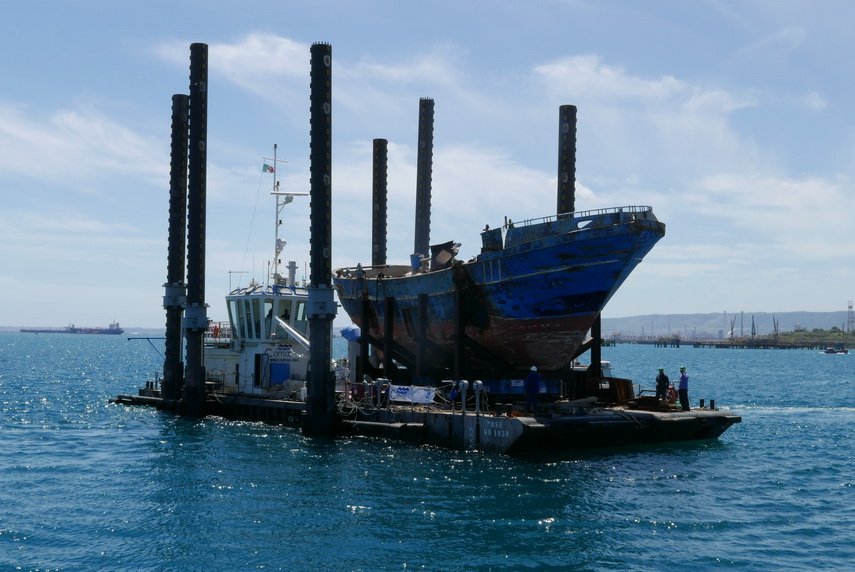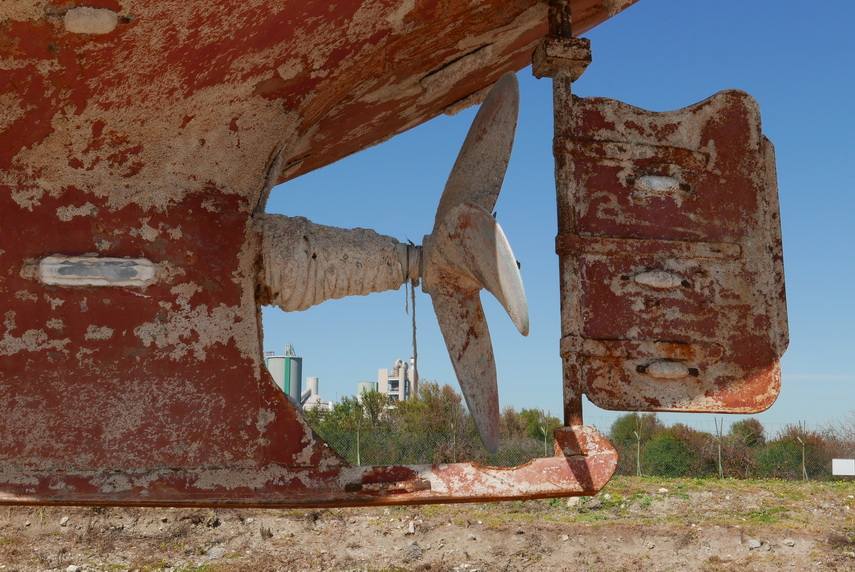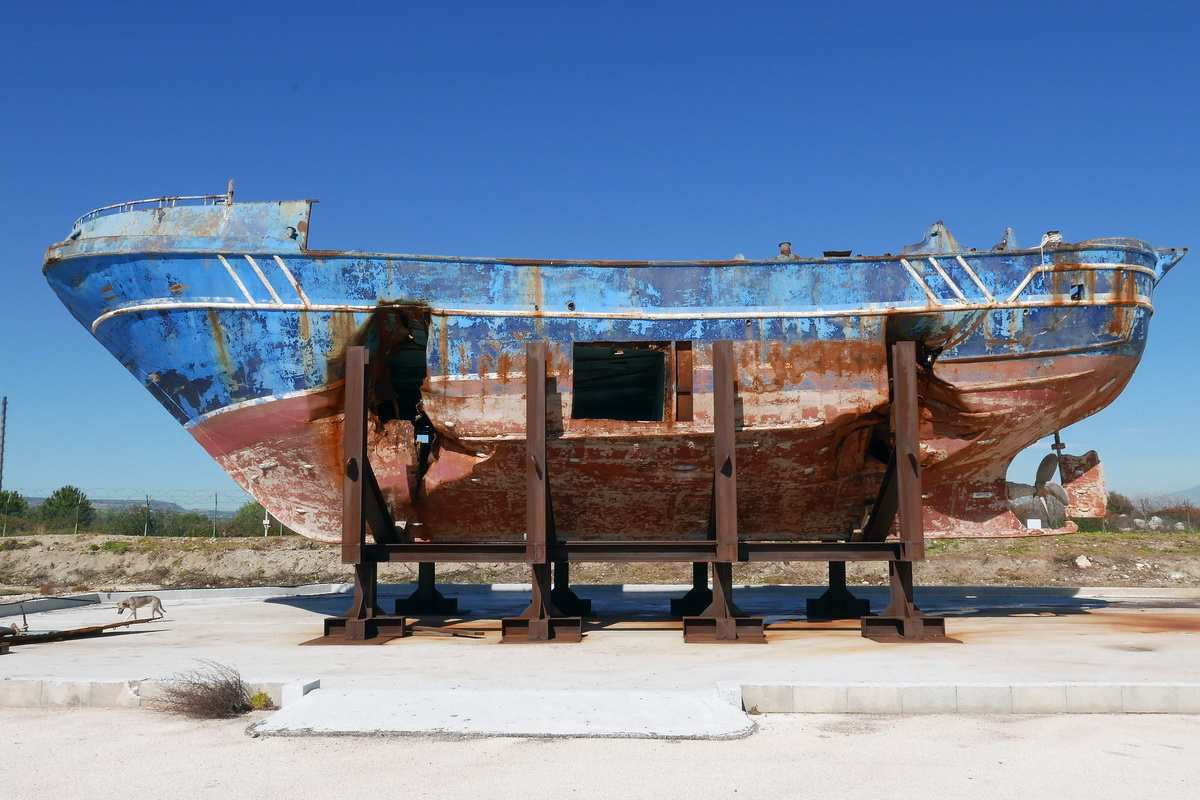[ad_1]
One of the major global humanitarian catastrophes happening after World War II is the ongoing migrant crisis. An enormous number of refugees primarily from Syria and several other conflict regions attempted to escape the horrors and the atrocities in their native countries. On their way to freedom, they were exposed to outrageous suffering spanning from blackmail, exploitation, to beating, rape, starvation, and sadly the casualties were many; as many ships in the Mediterranean sea were sinking, people were dying in the most horrific way. Despite the deeply disturbing image of a three-year-old Syrian boy lying motionless on the beach of a Turkish resort from 2015, the migrant policies barely changed; if anything, they only became even harsher.
Earlier that year, another catastrophe happened – on 18 April the deadliest shipwreck in living memory was encountered in the Sicilian Channel. Only twenty-eight people survived, while between seven hundred and one thousand one hundred people were proclaimed missing.
In order to mark this event and to question the matter of responsibility, humanity, and other important question from a distinct political perspective, the Swiss-Icelandic artist Christoph Büchel presents his ongoing project called BARCA NOSTRA, for which he puts the 2015 shipwreck on display publicly during this year’s Venice Biennale.

The Ship of Commons
This fishing boat was found 96 km off the Libyan coast and 193 km south of the Italian island of Lampedusa. Although it can carry a crew of maximum fifteen men, the boat was transferring migrants as the ship’s ballast, stored in the hold and machine room. After crashing with a Portuguese freighter attempting to come to its rescue, the boat sank with the people imprisoned in its inside.
This tragic event coincided the EU implementation of Operation Triton (conducted by the European border control agency Frontex) aimed to keep the European border in the Mediterranean. Furthermore, the European Union decided to end Operation Mare Nostrum, the rescue of various boats in trouble leaving them to the normal rules of navigation.
Christoph Büchel BARCA NOSTRA Venice Biennale 2019
A Monument to Tragedy
After the ship was located, the Italian government decided to take it over at a cost of 9.5 million euros, launching an investigation of the remains of the deceased in order to give them back their identities, i.e. the basic human dignity.
Finally, in 2016 the barca was recovered from the seabed by the Italian Navy and was transported to the Pontile Marina Militare di Melilli (NATO) near Augusta, Sicily, where the excavation and identification of bodies began. Over a hundred professionals and volunteers participated in the project, and it stood on the same location ever since, while various organizations and individuals proposed different location and role.
In 2016, Italy’s Prime Minister Matteo Renzi insisted that the shipwreck should be transferred to Brussels in order for Europe to take responsibility for the migration crisis so that similar tragedies would be avoided in the future. A year later, there was a proposal of the Laboratorio di Antropologia e Odontologia Forense at the University of Milan to include the relic in a Human Rights Museum collection in Milan. The city approved the suggestion and a budget was granted by the Italian state to the project. In 2018, there was also a cultural petition to claim the recovered shipwreck proposing it should become a mobile relic floating over national borders throughout Europe as a human rights and free mobility symbol.
All of the mentioned proposals were debated on political levels, however, none of them were realized. Nevertheless, on commemoration day in 2019, the state officials decided to hand over the shipwreck to the Commune of Augusta through this project by Christoph Büchel.

BARCA NOSTRA at Venice Biennale 2019
During the 58th La Biennale di Venezia, Christoph Büchel‘s shipwreck will be located at the Arsenale, a historical site where cultural and religious battleships were made.
BARCA NOSTRA surely is more than just a shipwreck; rather, it is a signifier of our reality, a relic of a human tragedy, as well as a monument to migration narrating the contemporary status of freedom of movement on a global scale. It is an indicator of collective responsibility and the horridness of nationalist discourses and current policies of the majority of European societies today.
Featured images: The migrant shipwreck of 18 April 2015 stored after its recovery in the Pontile Marina Militare di Melilli (NATO) near Augusta, Sicily; The migrant shipwreck of 18 April 2015 being transported from the Pontile Marina Militare di Melilli (NATO) to the Arsenale in Venice, Italy. Photo © BARCA NOSTRA.
[ad_2]
Source link

